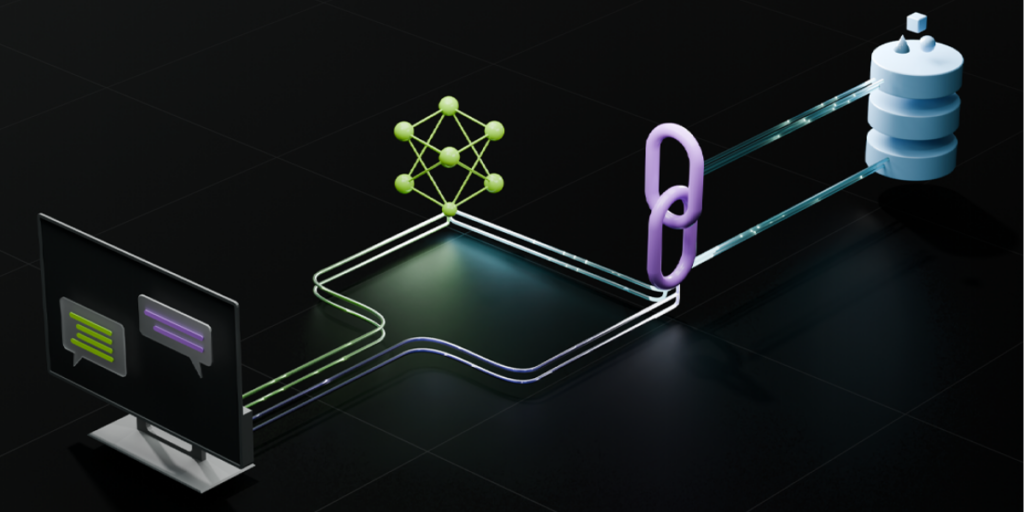The process of digitization and automation within the insurance industry has seen a rise in popularity over the past few years and an increase in speed. The insurance business, once the bastion of old-fashioned processes, has been undergoing a significant transformation. With expectations for customers and competition increasing, insurance companies turn to cutting-edge technology like AI powered claims management systems to simplify their processes, improve efficiency, and offer superior customer experience.
Artificial Intelligence (AI), the most powerful technology in this new digital age, is changing the claim processing management. Making the switch to AI now and planning for the subsequent iterations is essential for insurers to be aware of the upcoming transformational trends making the most impact.
In addition, customer-centricity wasn’t always at the top of the list in the insurance world. However, with the changing dynamics of customers, providing excellent customer service is a must. With the aid of AI insurers today, they have redefined their customer services by providing high-quality products, increasing the accuracy of underwriting procedures, and streamlining claim management for greater efficiency. AI is a key component of the insurance business. It is a revolutionary technology that offers insurers excellent opportunities to make faster and more accurate decisions without human intervention.
The Rise Of AI In Claims Management
After COVID-19, businesses worldwide have accelerated digitization and increased the usage of AI to improve their business processes, benefiting from efficiency advantages and the enhanced capabilities AI claims management systems can provide. For the claimed lifecycle, AI claims management systems can support human-centered tasks and enhance capabilities with the help of technologies like dynamic AI and image processing automation. These technologies can interact with adjusters, claimants, claim handlers, and third-party claims management systems/representatives in a way humans do.
AI-powered tools allow insurance companies to simplify and streamline processes throughout the life cycle of claim management. This results in quicker and more precise claims settlements, giving insurers a rare opportunity to prioritize customer satisfaction in each business choice.
How Is AI Used In The Insurance Industry?
The powerful blend of IA and intelligent AI will be the future of automated insurance. Let’s look at a few specific insurance industry scenarios where you could apply IA and other AI technology to achieve greater results.
Claims Management
If a client is injured in an accident or has their house destroyed, the first step of submitting an insurance claim can be significant for their relationship with their insurer. Ensuring the claim is processed efficiently and quickly is crucial for satisfying the client. The problem is that the conventional method for handling claims could be complicated and slow, which leaves customers unhappy and waiting.
IA can handle these tedious processes and speed up the process by grading claims to identify possible fraud or other issues. So, claims with low risk are processed automatically, while those with high risk are identified for further investigation.
AI models will even provide reasons for rejecting claims, making it more straightforward for analysts to solve problems quickly or for investigators to decide what to focus on. It’s beneficial not only for the firm but also for its customers since they receive information on the issues regarding their claim and what they can do to rectify it so that they’re paid more quickly.
Payment and Valuation
Insurance companies are frequently sharing information to fight fraud. AI examines large volumes of information and provides insights to help determine premiums, payments, etc. AI powered insurance software development tracks events and then automates the processes when specific scenarios arise.
It can give the employees quick estimations without lifting one finger. It’s also helpful in determining the best payment options. When you have to make payments, chatbots and text messaging can assist, and advanced analytics can assist by ensuring that policy checks are in sync and calculating the payment amount.
FNOL
FNOL documents vary and are frequently not structured. Instruments such as Intelligent Document Processing (IDP), also known as document automation, can analyze these non-structured documents, such as handwritten documents, photos, receipts, documents, etc., and then collate the information into a central space and distribute it to the right people. It allows you to analyze and process data more efficiently and empowers your employees to make better decisions.
Additionally, you can incorporate the Internet of Things (IoT) or Telematics functions to inform the insurer immediately about the possibility of a property or auto claim. Incorporating AI chatbots could reduce monotonous administrative tasks, making filing a claim and collecting the required initial data much easier. With mobile applications and texting, it is possible to create automated chats for the insured and claimants, making it much easier for them to inquire about basic, common questions and get a prompt reply.
Investigation and Coverage
In the process of checking for claims and deciphering what’s covered by insurance, AI will accelerate the process. The optical character recognition (OCR) documents written in hand, can be automatically read and sorted so that the person handling claims can concentrate on the analysis of damage incurred. AI can also be utilized to check images of vehicle damages, for instance, to ensure that the images were not modified or altered to make an untrue claim.
In addition, technologies, such as computers that see and drones with smart sensors reviewing images or videos, could accelerate investigations by presenting damage estimations more systematically. Additionally, precise analyses and projections can help catch criminals more quickly and efficiently identify suspicious behavior earlier. Humans can overlook flaws, while digital experts can pinpoint problems and identify an indication of fraud.
Fraud Detection
Gen AI can analyze large amounts of data from different sources, identifying specific patterns or anomalies that could indicate fraud. AI techniques can then sort through the information efficiently by flagging fraudulent claims to an analysis.
Gen AI can also generate predictive models to predict the risk of fraud based on past statistics and trends. In conjunction with IA, the models will aid insurers in making informed choices regarding which claims they should investigate and which claims have the most significant risk of being fraudulent.
How AI Is Transforming Insurance Claims Management?
AI is changing the face of insurance, transforming how claims are handled. By automating processes, enhancing decisions, and improving service quality, AI also drives significant advantages for policyholders and insurers.
Accelerated Claim Processing
AI automates the workflow, processing time, and faster resolution of claims. It guarantees better customer satisfaction and helps create a good image of insurance providers to ensure efficient services. Automating the routine process of document entry, data entry verification, and the initial assessment of claims reduces the time required to handle and speeds up the process of processing claims in general.
Automated Data Extraction and Validation
AI algorithms allow for high-speed and precise information extraction from an array of documents, such as accident reports, medical records, and estimates for property damage. This results in reduced manual work, lower errors, and savings in time and effort in assessing claims.
Utilizing sophisticated NLP techniques and machine learning, AI makes the anatomy of complicated documents understandable and interprets them. Thereby increasing the speed and efficiency of claims evaluation.
Intelligent Claim Triage and Prioritization
Sophisticated AI machines can perform highly complex data analysis and determine priority on claims based on the severity of the claim, the potential for fraud, and the effect it will have on the insurance company.
In this way, insurance companies can effectively allocate resources so that those with the highest priority first claims get the time and attention they need quickly. With the help of intelligent algorithms, AI will scan and filter the most important claims. This prevents delays in processing and improves the satisfaction of clients.
Predictive Analytics For Risk Management
AI-powered predictive analytics look at historical data to find patterns and forecast claims behavior in the near future. Thus, you should proactively manage risk, use resources effectively, and implement loss mitigation strategies. Adopting future trends in claims allows insurers to examine their underwriting procedures or pricing strategies and allocate resources more efficiently when deemed appropriate to reduce the risk.
Data-Driven Decision Making
AI-powered insight can assist insurance companies in making informed decisions, including optimizing resource usage, changing the method of settling claims, and identifying areas for process improvements. Through AI-driven analytics, insurers gain invaluable insight into their claims data and make informed decisions based on data to increase operational and financial efficiency.
Real-Time Monitoring and Alerting
AI-powered claims management systems for processing claims will detect potential bottlenecks and others in real-time. This could mean prompt intervention from insurers to prevent corrective action delays or operational effectiveness reduction. AI claims management systems can also inform insurers about the most critical performance indicators (KPIs) dropping to a positive level and other developing issues before they become an issue.
Reduced Operational Costs
AI could substantially reduce operating costs, like overhead and labor expenses, and improve workflows by automating repetitive processes. This would result in better efficiency and cost savings for insurers. AI will take over everything repetitive while allowing employees to be involved in strategically oriented activities at the top of the chain, resulting in improved productivity while lowering costs.
Enhanced Scalability and Resilience
AI technology will undoubtedly grow to cope with increasing demand for claims and provide prompt processes and payments when and during peak times. Due to high claims volumes, business operations can run efficiently without interruption or impacting customer service claims volumes.
Personalized Customer Experiences
Chatbots powered by AI and virtual assistants provide customers with all-hours assistance. They offer answers to frequently asked questions and guide policyholders through the claim process in a personalized way to enhance their customers’ satisfaction and increase loyalty, in addition to the overall experience for customers. Through AI, insurance companies can offer specific support for each customer, focusing on their particular demands and needs.
Protect Data
The processing of claims involves the management and storage of vast amounts of information. Similar to any repository of information, the insurer’s data management system is vulnerable to data breaches and cyberattacks.
AI/ML can quickly stop an expensive and damaging attack by being able to “study” and identify existing data patterns and similarities. It will then attempt to detect the same patterns in every data source. If it discovers an abnormality, it’ll inform a network user or administrator, thus preventing possible data loss and downtime.
Improve Claim Volume Forecasting
Insurance companies rely on forecasting volumes to establish the appropriate premium amount before the contract starts. Predicting the volume of claims with precision and reliability is essential to this procedure. It is possible to create custom AI models powered by machine learning that can be proficient in the quick and efficient analysis of claim data to help forecast the difficulty and size of each claim.
The impact of these can’t be understated. Big claims with uncertain outcomes, such as those, could be prioritized over claims with more likely outcomes, and the resources are allocated according to the likelihood of outcomes. What does this mean? Improved claims triage and commercial results and a better client experience.
Support a Decentralized Workforce
Post-COVID-19, most employees now work online. There is no face-to-face meeting between underwriters, adjustors, and personnel supporting staff. Insurers need to shift to AI-powered information validation and sharing tools when work becomes more remote workers. What can these tools bring to the table? Access to instant, secure access to the entire claim data on any device, anytime, from wherever.
Automated processes are eliminated, often leading to spending time searching for documents in physical form or re-creating lost documents. Access to near-real-time data across different departments will further improve claim processing processes. This is just the start.
How AI Can Expedite Claims Processing?
The insurance industry has long struggled with lengthy, manual claims processing. However, with the advent of digitalization, an AI-powered technology is emerging that will revolutionize the process. Insurance companies can deal with claims with unimaginable velocity and efficacy by harnessing the power of modern technologies such as optical character recognition, intelligent document processing, and automated claim categorization.
Advanced AI capabilities go beyond optimizing back-office operations; they also create more customized, customer-centered insurance claims. Insurers can customize their responses and provide prompt, compassionate support by analyzing an individual claimant’s risk profile and experience.
In this section, we’ll examine several instances of concrete proof that insurance firms leverage AI to accelerate claims processing, cut costs, and please the policyholders. From the quick digitization of paper-based papers and the automatic processing of claims with high priority, AI insurance software development services is poised to alter the fundamental aspect of managing claims:
Optical Character Recognition (OCR) Technology
In the insurance field, there is a clear indication that many customers and service providers continue to rely on paper-based documents. Although this can be a pain, technology has allowed us to speed up the process of documents made from paper to a greater degree of effectiveness.
AI-powered Optical Character Recognition (OCR) technology will enable you to analyze and extract meaningful information in photographs, documents, and reports, allowing adjusters to focus on and resolve claims faster. In conjunction with the smart process for processing documents and automatic categorization of claims, this will speed up claims processing and increase customer satisfaction by decreasing wait times and enabling faster payouts.
Intelligent Document Processing
Like OCR, advanced natural language processing (NLP) and machine-learning models are being used to detect and automate the extraction of pertinent details from various claims-related documents, such as medical records or police reports. This reduces the need to manually enter the data manually, further accelerating the claims process.
Automated Claim Categorization
For insurance companies, determining which claim to pay according to the nature and severity of the claim is vital. The core element of many SAP-based claims management systems, AI automation, has enabled insurance companies to approve clients quickly to cover their most emergency medical needs by prioritizing claims and routing them to the appropriate departments among the hospitals and insurers.
Personalized Claim Handling
With the advent of technology, brokers and insurers do not have to burden their claim departments with paper-based analysis and correspondence regarding their customers’ claims. The largest insurers have been employing AI to analyze each individual’s past, interests, health, and financial risk profile to offer individualized claim management solutions.
Limitations In AI For Claims Management
Although AI revolutionized the management of claims, it has the limitations of AI and isn’t a 100% reliable technique. First, the efficiency of AI depends on the quality of the data inputs, which includes claim amount and quantity. A study estimates that 83% to 92% of AI projects fail because of low-quality data. Making sure that the data is correct and up-to-date is a significant issue.
AI can also be unable to make the right choices in complex circumstances. For example, claims related to intricate medical procedures, like back surgery, need human supervision. AI may assist with making decisions but cannot substitute for human judgment. In insurance companies, there are AI approvers, which are humans who evaluate AI-generated decisions to ensure legality and reliability, specifically in the case of complicated claim types. Human approval is essential.
Most importantly, AI lacks the human compassion required to evaluate claims that involve suffering and pain. Even though AI can determine settlements based on the cost of medical treatment and earnings, it cannot account for the psychological and emotional consequences of an accident’s trauma. In the case of compensation for someone needing a knee replacement, AI does not consider medical conditions, previous sports activities, or their present job situation. This requires the assistance of a human.
AI Trends In Insurance Sector 2025
AI has been recognized as an essential driver for the industry’s growth this year. Over 50% of insurance companies have implemented AI to simplify underwriting, claim management, and customer service processes. The insurers saw significant improvement in efficiency, growth, and innovation.
In the face of increasing demands to adapt and innovate to changing market conditions, insurance providers will consider AI a key factor in innovation and transformation. Below are the main patterns that will lead the way for the AI-driven change:
GenAI Enhances Customer Interactions
Generative AI is expected to play a more significant role in changing customer interaction and internal processes in 2025. Over 40% of insurance executives have seen GenAI’s impact on customer experience and productivity. In the coming years, investments in GenAI are expected to grow, with most insurance companies making budget cuts to capitalize on GenAI.
One of the most important areas for transformation is hyper-personalized customer experience. GenAI allows insurance companies to customize interactions, manage policies, and settle claims according to individual customers’ preferences, behavior patterns, and past. This change will increase the customer experience and improve retention and conversion rates.
Additionally, the broader use of AI-powered chatbots will significantly improve decision-making and allow access to information immediately in real time. GenAI-powered claims management systems can enhance workflow efficiency by obtaining large quantities of information from databases within the company and external sources, increasing efficiency by up to 40%. Alongside increasing customer satisfaction, GenAI will streamline processing claims and underwriting processes. The ability to analyze and evaluate risks will lead to faster processes and better premium prices, which will benefit the insurer and policyholder.
Rise Of Usage Based Insurance (UBI)
The move between traditional lakes and data lakehouses is expected to enhance signers’ ability to handle and utilize structured and unstructured data. Data lakehouses currently in use by several companies worldwide, combine the versatility of data lakes with the structure of a data warehouse, allowing insurers to improve their AI models and analytics capabilities.
The increased use of data lakehouses will provide insurance companies with a more comprehensive approach to data storage, improving the predictive capabilities of risk modeling, analytics, and insights into customer behavior. These will lead to possibilities, such as using real-time consumer behavior data to constantly make risk models more accurate, ensuring they are aligned with present risk exposures.
Additionally, having a single storage system will allow faster data retrieval. Through effortless access to data, insurers can make instantaneous decisions. This is crucial in the insurance environment, which is constantly changing. Speed and precision are essential to the satisfaction of customers and efficiency in operations.
As regulatory demands rise, insurance companies must ensure compliance with privacy laws and regulations for data protection, with the help of their insurance software development company. Data lakes will simplify data management by applying appropriate check-ups and rules to non-structured and structured data.
Data Lakehouses To Support Advanced Analytics
Around 32% of calls in call centers are repeated. This can be a challenge, considering that 65% of customers switch service providers because of poor customer service. It’s good to know that generative AI can quickly modify every customer experience. Generative AI will create customized solutions specifically for every customer.
From plans for service to proactive advice on troubleshooting, Generative AI delivers specific services. The technology can manage multiple calls simultaneously and rely on an established resolution database to ensure everyone gets the same accurate data. In addition, organizations are no longer required to cross the language barrier since the generative AI can interpret multiple languages at the same time.
Complete Automation Of Claim Handling
When insurers are looking to lower losses and expenses, the primary focus of their efforts is the automation of claims handling procedures, from the initial assessment to the final settlement. AI’s capacity to reduce the time required to process claims by as much as 80% and reduce expenses by 30% can significantly improve operations efficiency. AI will speed up claims resolution, increase service quality, and lower overhead costs.
Automating the entire process from beginning to end will help insurers deal with claim leakage, a loss that results from inefficiencies, such as unneeded payment or excessive compensation. By using sophisticated systems that monitor and alert insurers to issues occurring in real-time, insurers can avoid more excellent loss ratios.
Alongside leakage of claims, AI-driven claims management systems can aid insurers to combat claims fraud. Although traditional methods for detecting fraud are often slow and time-consuming, AI can uncover hidden patterns within claims data by analyzing large amounts to find fraud and other irregularities that may not be noticed. Real-time detection can reduce the chance of fraud, saving insurance companies millions each year and improving the total security of the claims procedure.
Conclusion
AI technology will develop and improve as time passes, offering more excellent value with every new day. In the meantime, insurers are focused on using AI for revenue streams. The claim management mustn’t be neglected. AI for claims management is critical in ensuring customer-centricity and sustaining insurers.
With AI, insurance companies can speed up claim processing, increase the ability to detect fraud, increase the risk assessment process, and provide an improved and quicker claim experience. In the coming years, as the market grows, adopting AI-powered solutions is essential in helping insurers meet the ever-changing demands of policyholders. The future of claim processing looks bright, and can be found at the heart of this evolution.








